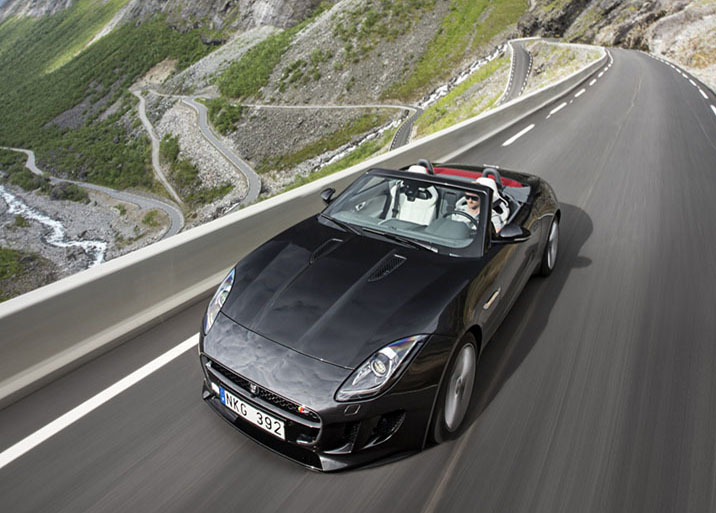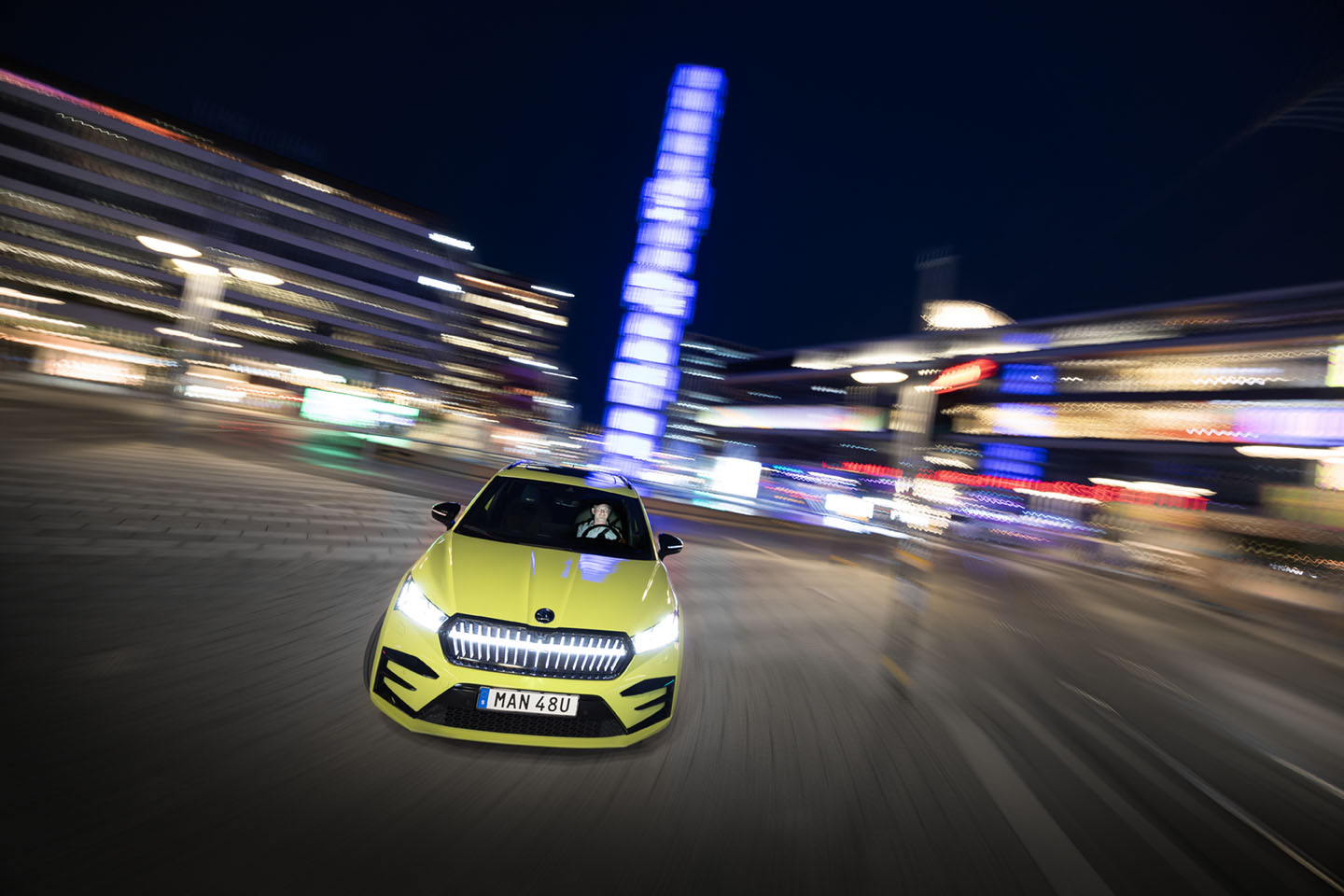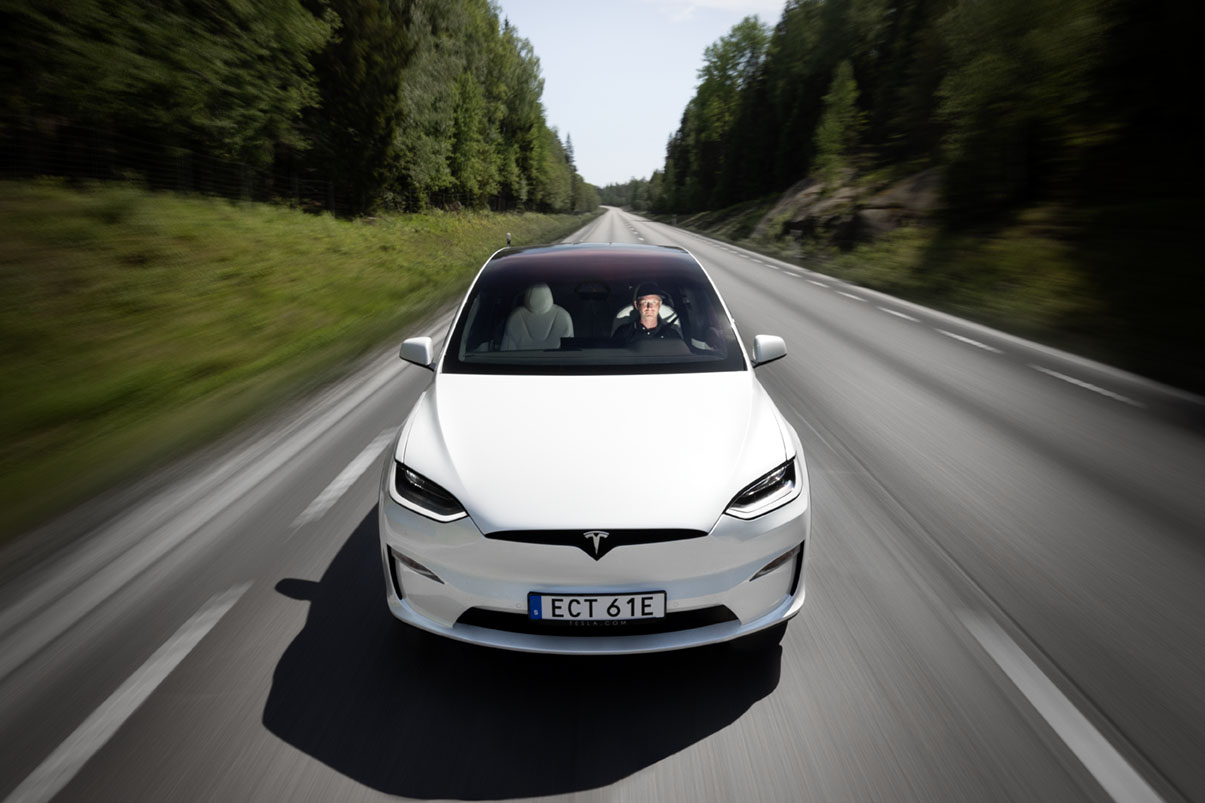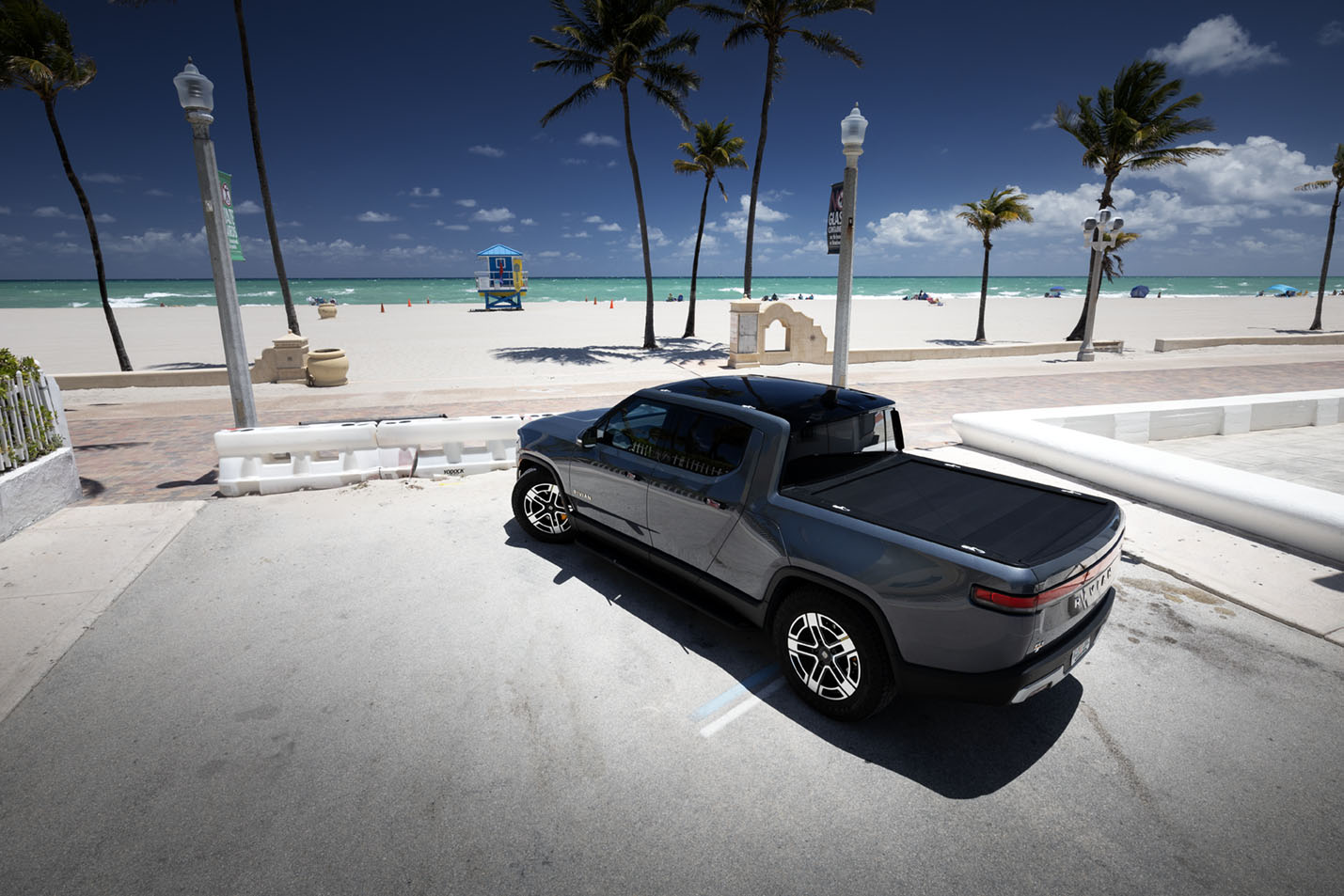
The article was originally produced on February 25, 2014, some facts and prices may have changed since then.
Jaguar F Type S, Atlantkustvägen, Norway
The Atlantic Coast Road in Norway is a well-publicized stretch of road that includes parts such as Trollstigen and Geiranger. So famous that the Cars Collection couldn't help but choose this scenic route to test Jaguar's latest and loud novelty F-Type S.
It has taken many years, 40 to be exact, for Jaguar to finally unleash this strict two-seater convertible. The last time the brand had a similar model was the E-Type, which ended production in the mid-70s. The fact that it took so long for the brand to follow up on the model is likely to be blamed on the incredible mega-success the E-Type was and thus impossible to surpass. Unfortunately, the real reason is not as remarkable and has to do with bad finances. It was only when India's Tata took over the helm of Jaguar that the economy got good enough to finally produce a new strict two-seater roadster. The concept for the F-Type was shown for the first time at the Frankfurt motor show in 2010 under the name C-X16, then in coupe design and with a hybrid drivetrain. When the F-Type finally rolls out on the roads, it is initially available in three engine versions. A V6 with 340 horsepower, a V6 with a supercharger of 380 horsepower, and the worst model with a V8 and supercharger of a whopping 495 hp. Z Magazine chose to test the intermediate model with the suffix S after the model designation. This version would prove to be more than enough for the trip over the Norwegian mountains and along the fjords.

Norway is, without exaggeration, a fantastically beautiful country, people usually joke that Norway got everything and Sweden got nothing. It's not really that bad, of course, but if you look closely, the unusually long, narrow country to the west of Sweden has plenty of beautiful mountains and fjords, as well as access to oil. In other words, a both beautiful and prosperous country. There are of course downsides to all the country's advantages, one is that road construction has not been the best when compared to other countries in Europe. Considering how difficult the terrain is with high mountains and deep fjord valleys, having a well-developed road network will be both an expensive and complicated story. It is sometimes jokingly said that Norway's city coffers would run out if the entire road network were developed to EU standards. Precisely for this reason, the road network, on the other hand, is among the most fun to drive with all the curves and steep, heaving sections of road. It certainly takes a long time to travel from A to B as the current speed limit is usually around 70 km/h. To prevent the travelers from dying of boredom, this has been solved by filling the stretch of road with lots of works of art and architectural rest stops along the way. Most of it is also free as you have often just used nature and enhanced its beautiful surroundings in various ways.


The journey starts from the north and enters Norway via Sweden and Åre. The last meal before the slightly more expensive meals in Norway are eaten at Wersén Restaurant. A delicious three-course meal consisting of venison with a beef Rydberg on the main course ensures that the fullness lasts until Trondheim, where the first overnight stay takes place. From Trondheim, the journey is over the eye-catching Storseisund bridge. Like a snake, it winds its way between the small islands, which you can clearly see from the top of the bridge. In total, there are eight bridges that link the islands and the Storseisund Bridge is the largest with its 23 meter span and 260 meter length. The bridge was inaugurated in 1989 and is a major tourist attraction. On both sides of the bridge there are rest areas for those who want to stop and take an extra long look or take the opportunity to take pictures of the bridge. From the Storseisund Bridge, the journey goes south to Ålesund. A small town at the far end of the coast that offers a magnificent sunset right in front of the hotel window. The following day, the mythical Trollstigen is on the menu, a serpentine road that has been named one of the world's most beautiful roads several times and is one of the major attractions along our stretch of road. At the top, which is approximately 800 meters above sea level, there is a large parking lot with both a souvenir shop and a café. From there, you can also take a small cemented path to a couple of landscaped lookouts to get a really good view of the road.

The machine in the F-Type S is a supercharged V6 of 3 liters and 380 horses. 0-100 is accomplished in 4.9 seconds and the top speed is reached at 275 km/h. On paper, the numbers don't impress above the norm, and in reality they don't either. But they are more than enough for those who want to have real fun in a car for two without a roof. The consumption figures stay within reasonable levels if you don't go full throttle all the time. One thing, however, that really cannot disappoint anyone and is absolutely above the norm is the sound from the two pipes at the end of the car. Never has a supercharged V6 sounded like this, it's angry and hisses and snaps like an enraged cat. Even in normal mode, it is not possible to start the car without it giving an exhaust bang at the start. Here, no one should lie awake without knowing who goes to work first. The driving feeling is also above normal, a very finely tuned chassis makes the journey along the winding roads a pure joy. With anti-skid in the sport mode, the car allows a little stand in the curves but helps when it goes too wide. A wind protection would be appreciated as there is some turbulence at higher speeds. But on the whole, you feel very comfortable in the cockpit, which has a neat and clean driver's environment.


After the Trollstigen, the navigator is set on Lillehammer via Geiranger, a gigantic fjord that offers views far beyond normal. At a rest stop on the way down you can enjoy the magnificent view and it's hard to get tired. The Hurtigruten that glides along far down there on the water looks more like a small model boat in miniature. This is Norway at its most beautiful and it is quite difficult to grasp the grandeur. The road to Lillehammer offers the first rain of the journey and that is the only downside apart from relatively high prices. The weather changes incredibly quickly here and we were lucky to get so much sun along the way. You should plan your journey so that you don't stress. There is too much to see, both in terms of magnificent nature, beautiful rest areas and the fact that the weather can be bad one day but quickly changes for the better. Of course there are roads down in the European Alps that offer at least as awesome experiences, but why travel so far when Norway is so close. The Atlantic coast road is one of the most beautiful roads in the world. Experiencing it from a two-seater convertible with good driving characteristics and a great soundtrack makes it a memory that will never be forgotten.




Jaguar F-Type S
| Basic price | About SEK 830,000 |
| Engine | 3-liter V6 with supercharger, 380 hp. Torque 460 Nm |
| Transmission | Front engine, 8-speed automatic, rear wheel drive |
| Acceleration | 0-100 in 4.9 seconds |
| Top speed | 275 km/h |
| Fuel consumption mixed driving according to the manufacturer | 0.92 l/mile |
| Weight | 1,614 kg |
| Guarantees | 3 years new car, 6 years rust, 3 years paint |
| Web | www.jaguar.se |




